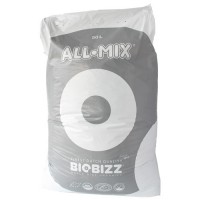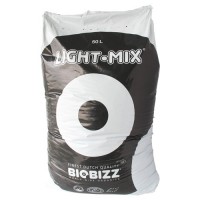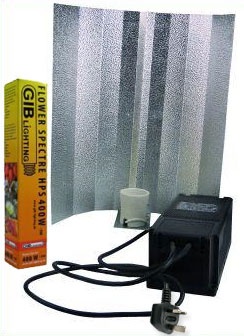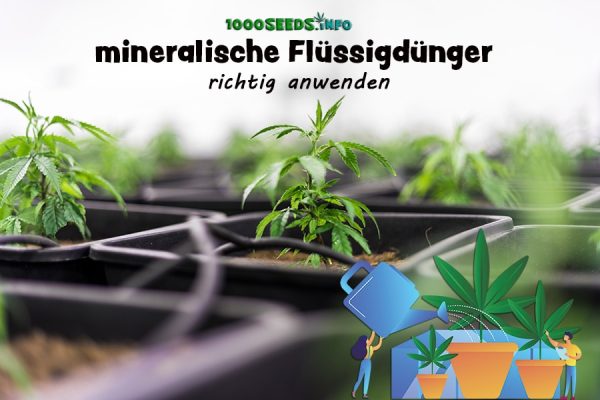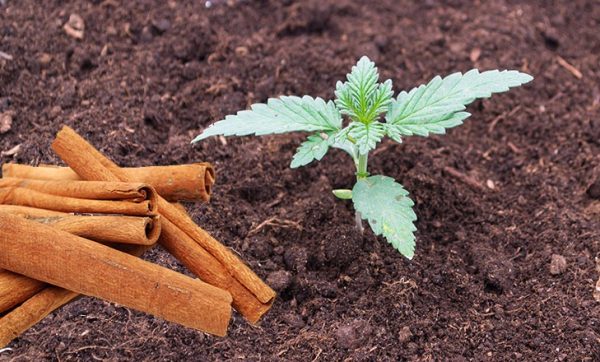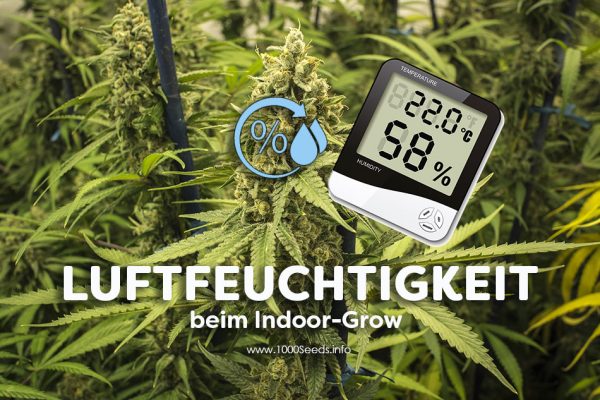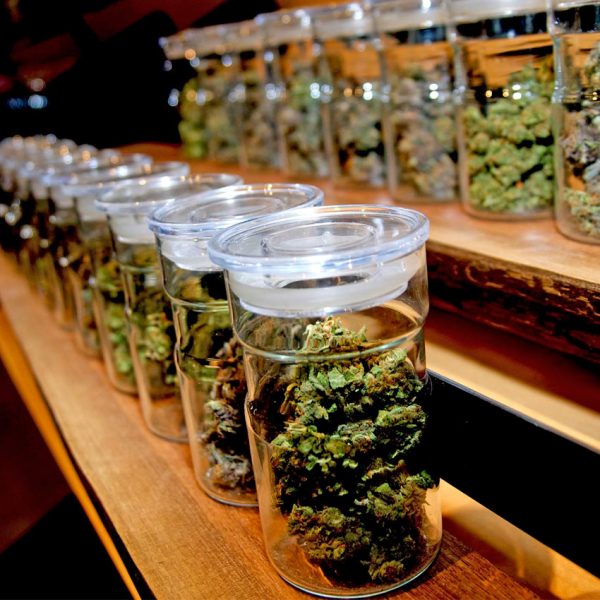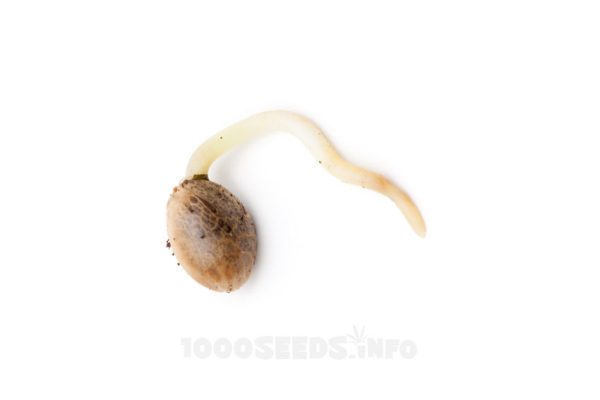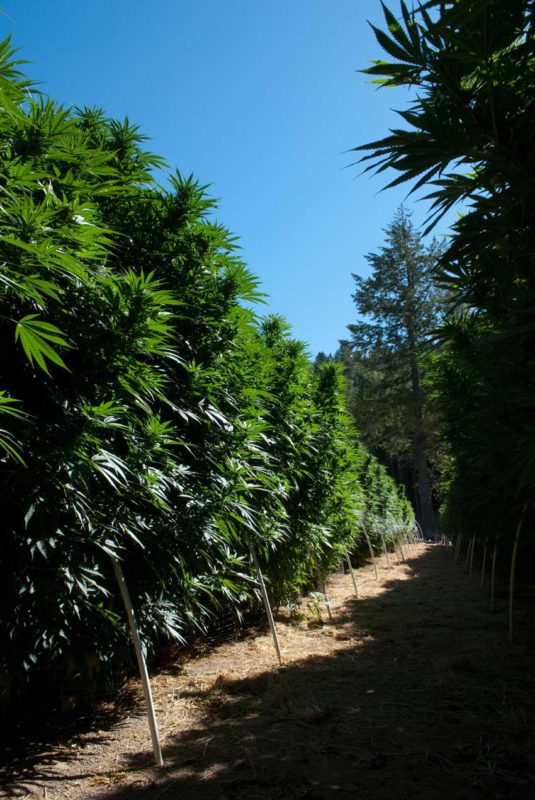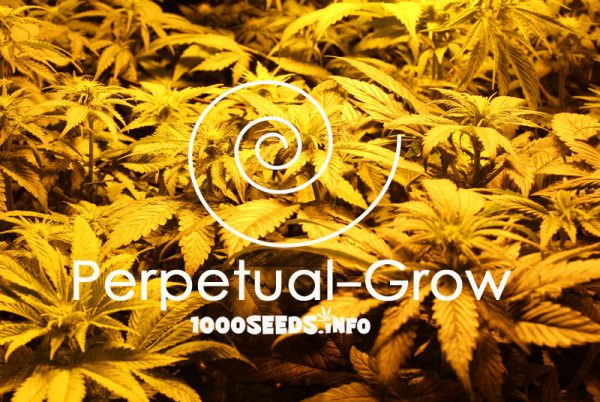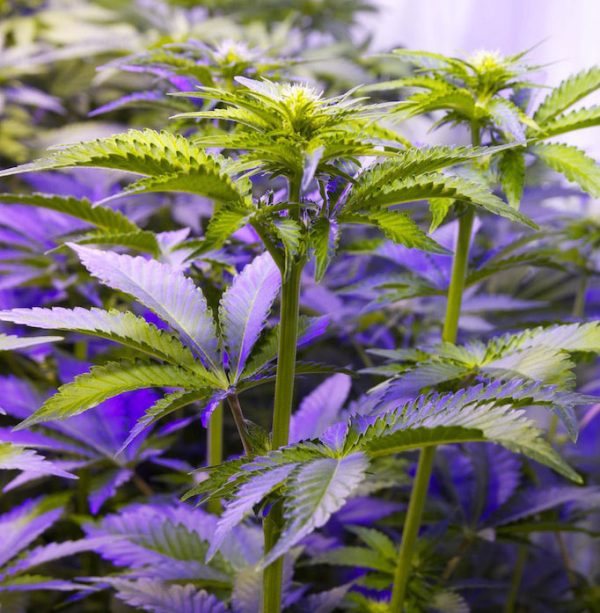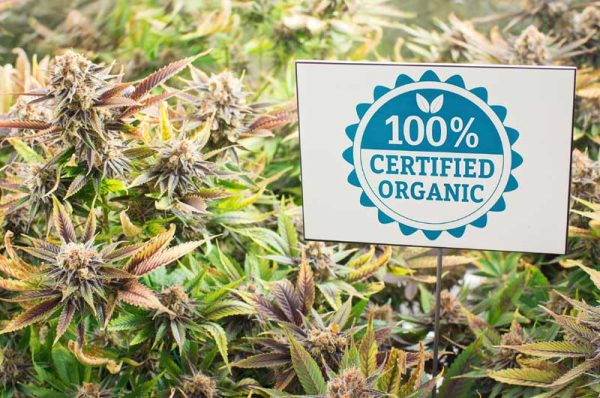So the seeds have germinated and have been stored in Jiffy's, Rockwool or Soil planted. Now we move on to the next step. A few days after the seeds have been placed in their growing medium, the first two round cotyledons appear.
In this first phase of life, the plants are still very weak and should be handled with care. In the first few days and as soon as the plantlets even begin to show and sprout from the soil, they should be placed under a Neon tube, a Plant energy-saving lamp with blue or dual spectrum or a MH lamp (with sufficient spacing) so that there is sufficient light for healthy growth right from the start.
1. the substrate and fertiliser for cannabis
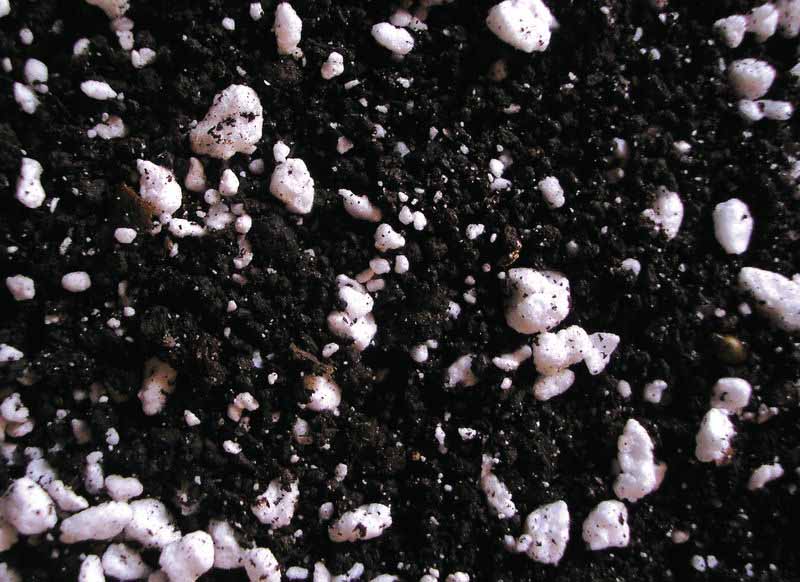
The substrate and fertilisers are a very important part of cultivation. A good soil is one of the basic requirements for the plants to feed and develop well. A poor substrate or low-quality potting soil usually reduces the success of the grow work very significantly.
With pre-fertilised cannabis soil ( e .g. All-Mix ), no fertiliser needs to be used at first because the soil already contains enough of it and the plants can be supplied with it for some time. With hardly or not pre-fertilised soil (such as Light-Mix ), fertiliser is normally used from the beginning according to the fertiliser scheme of the respective manufacturer. In the Fertiliser charts instructions tell you exactly when to fertilise which soil with which fertiliser and in which dosage. This differs from manufacturer to manufacturer in some cases and the dosage of the individual fertilisers also varies depending on the brand. Especially as a beginner, you should always stick to the dosage (rather use slightly less than indicated!) described in the fertiliser scheme and decide on a fertiliser line and then use all the necessary products from it, i.e. from the same brand.
A liquid fertiliser contributes to rapid assimilation and allows precise control and dosage of nutrients when watering the plants, e.g. Bio Flora and Vega from Canna or Bio Nova. Good nutrition makes the plants grow strong and healthy. The leaves then have a rich bright green, the side shoots are strong and robust and the roots grow luxuriantly. The result is a greater number of flowers and thus a higher yield.
Soil that is very compact and dense, chalky or sandy should not be used for growing cannabis plants. Cannabis plants need a substrate in which nutrients can easily drain away and which at the same time has the ability to retain moisture without trapping it for too long. Watering should be done every 2-3 days (of course, always according to the actual needs of the plants), which means that within this period of time, most of the water should have been removed from the pot and evaporated. This way the roots will always be in good condition and problems such as botrytis, root rot, mildew etc. can be prevented in advance.
The All-Mix is intensively pre-fertilised, the Light-Mix is hardly pre-fertilised.
Problems that can arise from a poor and inferior substrate for growing cannabis:
- Das Wurzelwachstum verlangsamt sich.
- Es erfolgt wenig oder keine Aufnahme von Nährstoffen, weil der pH-Wert entweder zu sauer oder zu alkalisch ist.
- Übermäßige Wassereinlagerungen führen zu überschüssiger Feuchtigkeit bei den Wurzeln, es ist dann dort zu wenig Sauerstoff enthalten und das Risiko von Wurzelfäule steigt damit erheblich.
- Es kann zu Mangelerscheinungen bei den Pflanzen kommen, weil das minderwertige Substrat zu wenige Nährstoffe enthält oder diese nicht ausreichend speichern kann.
- Nährstoffe werden blockiert und es kommt zu Mangelerscheinungen.
- Es kommt sehr leicht zu Versalzung des Bodens, was zu einer Vielzahl von Problemen führen kann bis hin zum Sterben der Pflanze.
- Billige Erde enthält häufig Unkrautsamen, Insektenlarven, Keime und Pilzinfektionen.
- Vermindertes Pflanzenwachstum.
2. the first repotting of the small cannabis plants
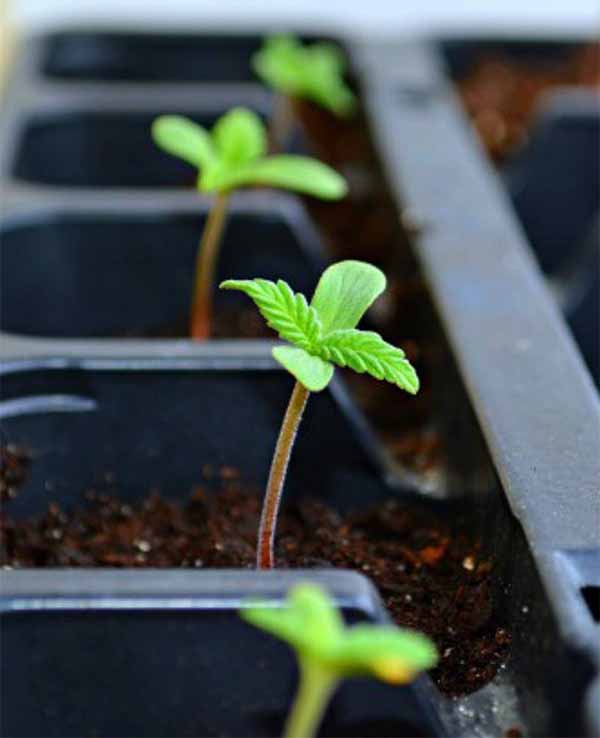 As soon as the cannabis plantlets have formed the first two leaves, they can be placed in a Plant pot with 0.5-1L volume be planted. Repotting always puts a certain amount of stress on the cannabis plants and the plant must first get used to its new pot. When repotting, considerable stress for the plant can be avoided if care is taken that the roots in the new pot do not immediately touch the edge of the pot, but that there is soil all around and the plant is placed in the middle. To do this, make a cavity in the soil in the middle of the planter and place the plant in it. When repotting, take the small plant out of its old pot as carefully as possible without tugging or pulling on the plant from above. Hold the plant upside down and pull the pot upwards when you feel it.
As soon as the cannabis plantlets have formed the first two leaves, they can be placed in a Plant pot with 0.5-1L volume be planted. Repotting always puts a certain amount of stress on the cannabis plants and the plant must first get used to its new pot. When repotting, considerable stress for the plant can be avoided if care is taken that the roots in the new pot do not immediately touch the edge of the pot, but that there is soil all around and the plant is placed in the middle. To do this, make a cavity in the soil in the middle of the planter and place the plant in it. When repotting, take the small plant out of its old pot as carefully as possible without tugging or pulling on the plant from above. Hold the plant upside down and pull the pot upwards when you feel it.
When the plant is planted in its new pot, it is watered with a little water so that the roots can adapt better.

Common mistakes when repotting and watering cannabis plants:

Far too much water for a newborn plant. It looks bad for this little plant, a normal development can no longer be expected and the plant will either die or only develop extremely weakly and slowly.
One of the most common mistakes is to choose a pot that is too big. This means that the soil takes too long to dry out, which can lead to a variety of problems: the root zone lacks oxygen, the plants grow slowly, root rot occurs and/or nutrients can no longer be sufficiently absorbed.
Repotting for indoor cultivation at 12 to 20 plants per m²:
- 1. planting in a 0.5-1 L pot
- 2. repotting in a 3.5 L pot
- Repot for the 3rd and last time in a 7-11 L pot.
The first two repotting operations are carried out during the growth phase, when the lighting is at 18/6. It is advisable to repot the third and last time after the first day of pre-flowering. If it is not possible to get the time right, repotting should be done just after the lighting time has been reduced to 12 hours a day. The plants get new soil with an optimal absorption capacity before they start flowering.
The plants need less humidity during the flowering period than during growth and consume (increase) more water. The humidity should be kept constant.
3. number of plants and suitable light for cannabis plants.

Correct and sufficient lighting is an enormously important point before you can enjoy lush yields (see: The right lighting for cannabis plants). There is a direct correlation between light intensity and yields.
The number of plants on the cultivation area should be in a healthy and logical proportion. Depending on the cultivation technique, 25-30 plants per m² are planted for a Sea of Green (SOG) and about 1-8 plants for the Scrog method, where fimming and pruning are used to increase the number of flowers. For beginners and regular growers, a number of 10-16 plants per m² is recommended without using special techniques such as pruning. Indica strains or indica dominant stra ins are particularly hardy and much easier to grow indoors than sativas.
Indoor cannabis plants need sodium vapour lamps with an appropriate light intensity (and colour spectrum) to deliver potent yields.
Room size and light output of the sodium vapour lamp for cannabis cultivation:
- 0.50 m² illuminate with 250W
- 0.75 m² for 250W - 400W
- 1 m² ideal for 400W
- 1.20 m² ideal for 600w
- 1.50 m² suitable for 600W, ideal for 2 x 400W
- 2m² ideal for 2 x 400W or for 2 x 600W
- 2.40 m² ideal for 2 x 600W
It is recommended to use a 400W-600W NDL lamp on a 1m² or 1.2 m². This can be done without much effort. Just as there is a direct correlation between light intensity and crop yields, there is similarly a correlation between air renewal and oxygen supply and good yields.
4. Good and constant air exchange for an optimal climate.

A good and constant air exchange prevents the excessive formation of humidity and the associated problems, especially fungal problems. At the same time, the constant air exchange provides the necessary oxygen supply and creates an optimal atmosphere in the grow room, which the plants absolutely need. Air exchange and the associated oxygen supply is extremely important in all phases of the plant's life. A sufficiently powerful fan should be used for the grow room to ensure the optimum climate. More information: The right ventilation.
Every grow box and every grow room needs an exhaust air and a supply air. The exhaust air is connected to a sufficiently powerful fan with an activated charcoal filter (e.g. a UF fan). The fan also serves to prevent excessively high temperatures during lighting with the NDL lamp and transports warm air out of the grow box so that no heat build-up occurs.
Soundproof felxible tubes or extremely quiet fans such as the TD Silent are particularly silent in this respect. More information about climate and climate control in the growroom can be found here: Equipment for the air conditioning of the growroom and How can I control the climate in the growroom?
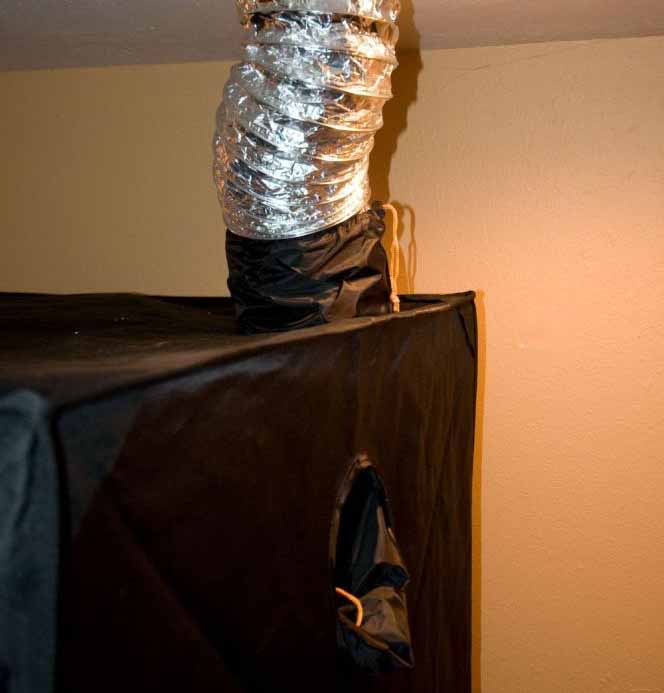
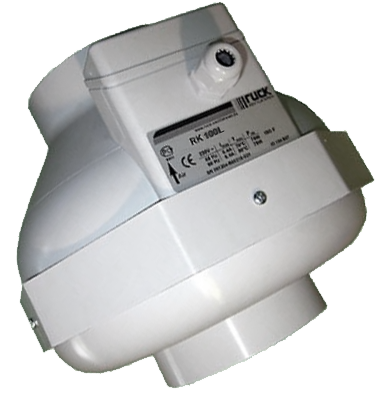
Pipe fan for exhaust air
5. ventilation in cannabis cultivation
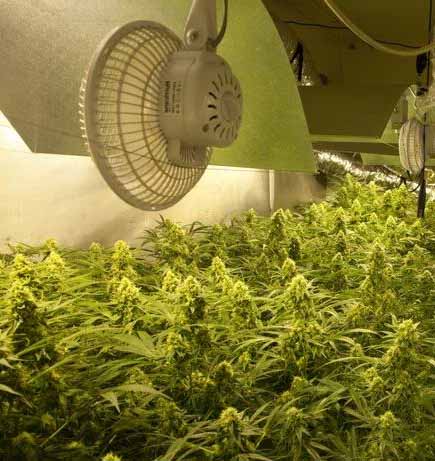
Equally important is the use of Fans in the grow tent/grow room. These prevent the condensation of water on the plants during the night and transport stale air away from the leaves so that new air can reach them. In addition, the stems and shoots of the plants are moved, which leads to a strong and robust growth of the branches and the main shoot. Even in the wild, the plants are constantly exposed to air movement and wind. In the grow box, this is imitated with a fan. The fan power should not be exorbitant, because a too strong and direct air flow can cause the plants to dry out in some places or even cause "air pitting" (the leaf looks gnawed, although no other signs of disease are visible).
6. the right humidity for growing
Humidity during cultivation is one of the most important aspects to ensure the production and quality of the plants. In the first phase of life during growth, the cannabis plant still needs more humidity, and as it grows it needs less and less.
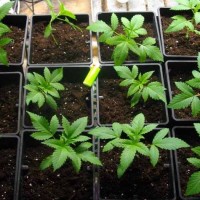
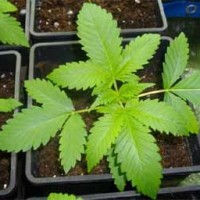
Cannabis plant with balanced moisture and nutrient supply
Ideal Humidity during growth: 65-70%. at night and 50% during the day. If the humidity is below 40% during the day, mites may appear more frequently. This relative humidity should be maintained throughout the cultivation period. Only in the third and last phase of cultivation, it is then reduced to 50% at night and 40% during the day.
7. mistakes during the growth of the marijuana plants.
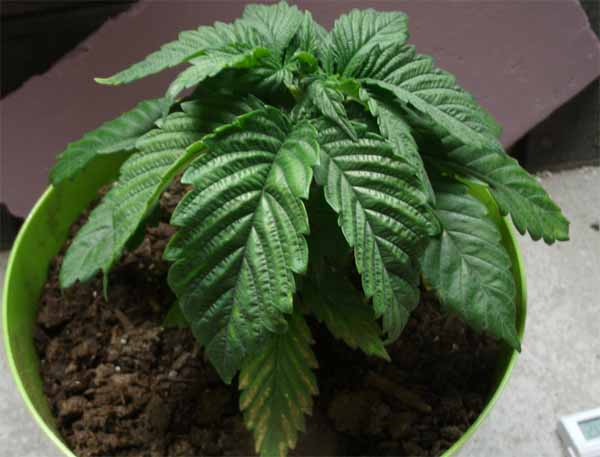
Overwatered cannabis plant
During the growing phase, mistakes often occur that many beginners are not aware of at first and which are also often not directly and immediately recognisable. These mistakes then continue through the further development of the plants and should therefore be avoided in advance.
Mistakes are often made when watering cannabis plants, especially in the early stages. When the plants are small and young, they do not yet have a powerful root system with which they can quickly remove excess water, and this often leads to overwatering and waterlogging, which seriously damages the root system.
Excessive growth of marijuana plants during their growing period can also be a problem, especially for the novice but also for the experienced grower. Some strains start to grow wildly due to their genetic characteristics and the very good growing conditions before doubling or even tripling in height during flowering.
In the event that you are surprised by excessive growth, appropriate measures must be taken to remedy the situation. Too many shoots or too extreme a height can have a negative effect on the lighting of the plants, among other things. Too many shoots are then no longer properly illuminated. This results in numerous buds in the lower part of the plant that are not even suitable for BHO because they are too weak and "insubstantial". The plants can be tied down and pruned to limit the height. Weak branches and leaves at the very bottom of the plant, in places where there is little or no light anyway, should be removed. This way, the plants are better aerated in this area and they can use their energy for the flowers higher up and concentrate on them.
Varieties that are known to grow very tall should be sent into flower early, so their height growth can be contained and controlled.


By tying down cannabis plants, their height growth can be curbed and at the same time an even and ideal illumination of the flowers is made possible.
8. too much fertiliser
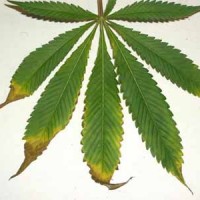

Signs of overfertilisation
Using too much fertiliser, i.e. too high a dosage, is a common mistake when growing cannabis. Many growers stick to the manufacturers' specifications, but these are often designed for very large plants and not always across the board for all varieties. This can lead to overfertilisation, for example. Excess fertiliser can cause rough and downward curved leaves.
Therefore, it is important to always observe the plants closely and, if necessary, initially tend to stay slightly below the manufacturer's specifications. The goal for the plants is a beautiful bright green colour, which indicates that the plant is ideally supplied.
Another common mistake when growing cannabis and using fertilisers is that it is often assumed that plants are like food processors that can easily and immediately access something when they need it. With soil, you can't just keep adding nutrient solution, you have to wait until the plant has sufficiently used up the water in the pot.
Dry spells in cannabis growing
9. marijuana in too dry substrate
As already mentioned, the optimal balance when watering is enormously important. Whether the planter still contains a lot of water or needs to be watered again can be determined with a little experience and after some time also by the weight of the pot. A heavy pot contains a lot of water, a light one a little 😀.
Another simple method of controlling the moisture in the planters is to choose pots with large holes and possibly make additional holes at the bottom of the pot but also on the sides as drainage holes. In addition, it is advisable to fill in a drainage layer of expanded clay at the bottom of the pot to prevent waterlogging and to make overwatering more difficult.
The opposite of overwatering, namely dehydration, is just as bad for the plants. Roots can dry out and die. The ability to absorb and utilise nutrients is severely impaired. Automatic irrigation systems can supply the plants with exactly the amount of nutrient solution they need. No drying out can occur. However, these are mainly used in hydroponic systems with soilless substrates.
Again, it is important to closely observe and control the plants and the substrate.
10. mistakes during the flowering of the cannabis plants

The flowering period of a (normal photoperiod) cannabis plant lasts at least 6-8 weeks from the time the light changes from 18 hours a day to 12 hours a day. Many cannabis strains have a longer flowering time than 8 weeks. If you harvest too early, you will lose a lot of yield and especially potency. You should never simply follow the seed banks' indications when it comes to flowering time. The flowering times given are average and rough. However, as each plant is an individual living being, it will not follow a given time scheme like a timer. When a plant is finally ready to harvest depends on the environmental conditions in which it has been cultivated and on its unique genes.
If cannabis plants receive too much fertiliser, i.e. nutrients, during the flowering period, this often shows up, for example, in dehydrated leaves that are wrinkled and wrinkled (see also: overfertilisation). An excess of fertiliser also has a clearly negative effect on the development of the plants and thus the yields in this phase.
11. too much water and humidity during flowering
Too much water during the flowering period can cause nutrients in the soil to be leached out and can no longer be absorbed by the plant. This can lead to a macro- or micro-nutrient deficiency.
Care should be taken that root rot does not enter the planters via the watering can. Therefore, it is best to disinfect with chlorine solution or similar, as with all equipment. You should not store water containers or watering cans with water in the grow box or in the same room. (Except for hydroponics, of course 😀 ) This can cause the humidity to increase unexpectedly and rise to a level that promotes and causes fungi such as botrytis to break out. This then leads to a severe weakening of the plant and significant crop losses.
12. dry periods in flowering cannabis plants
During flowering, the cannabis plant needs more water than in the growing phase, so we can gradually increase the dose that is needed. The need for water is visible in the soil and the substrate as described before. One should stop using fertilisers 2 weeks before harvesting and only water with clear water, so that afterwards there are no fertiliser residues in the finished grass and the flavour is not affected.
If the plants do not receive the sufficient and required amount of water and nutrients during the flowering period, the flowers will be less compact, less tasty, less aromatic and fragrant. It takes a lot of energy and effort for the cannabis plants to form the flowers and fully mature.
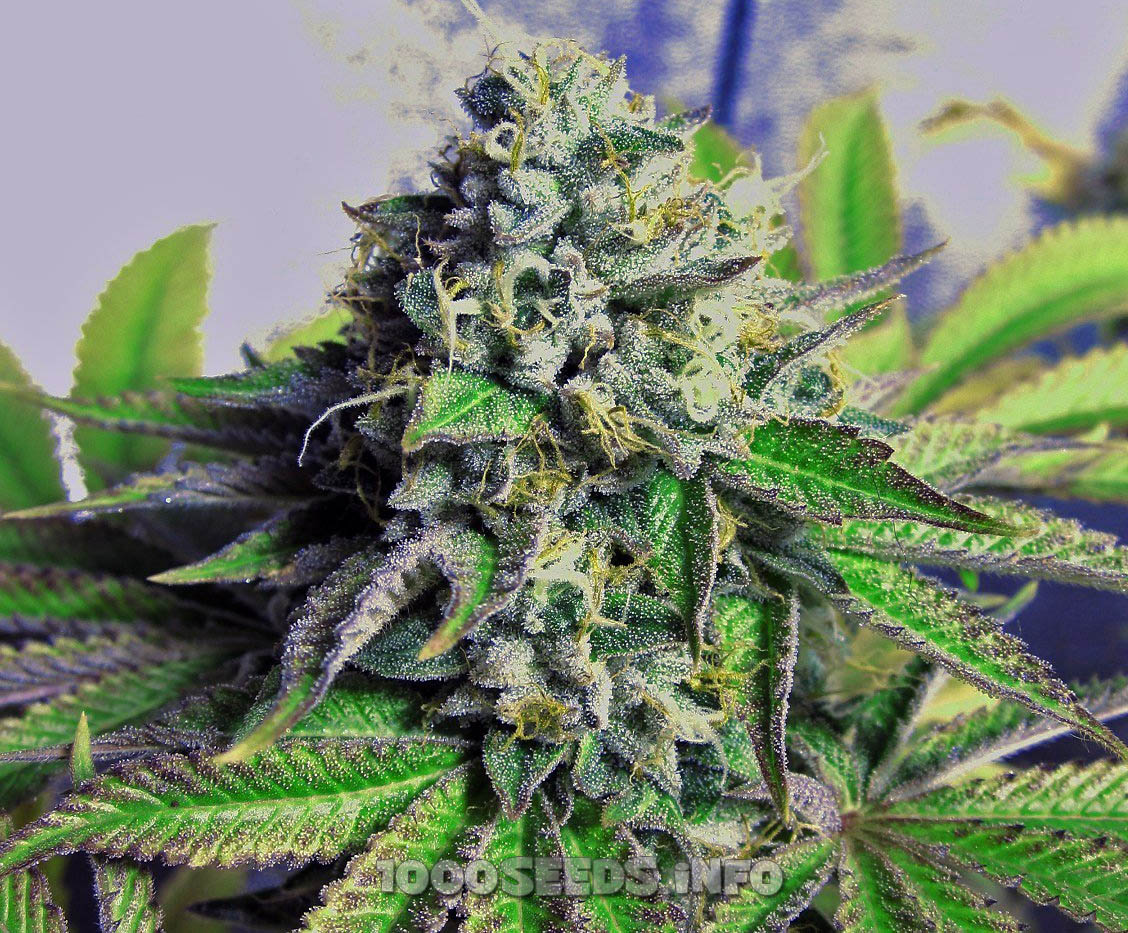
For the development of large and juicy buds, the plants need a sufficient and reliable supply of water and nutrients.
13. too high temperatures for cannabis plants

Cannabis plants respond well to (room) temperatures of 20°-27° C. The ideal temperature for most strains is 24° C. If the temperatures are very high when growing, the plant has to spend a lot of energy in its metabolism to cool itself down. In flowering, too high temperatures lead to reduced flower production, odourless and tasteless flowers that are less dense and finally to an inferior end product.
If it gets too hot for the plant, this can be seen, among other things, in protruding leaf edges. In order to avoid excessive heat during indoor growing, the Cool Tube reflectors The hot air produced by the lamp can be led directly out of the grow room via a fan without reaching the plants. See also: Climate control in the growroom
Excessive heat or lumen can cause burns to the plants, especially the leaves. Therefore, always ensure the correct distance from plants to the lamp.
recommended distances of cannabis plants to an NDL lamp/MH lamp:
- 250W -> 25 cm
- 400W -> 40 cm
- 600W -> 50-60 cm
Depending on the ambient temperature, plants can have a sometimes very different need for water. In cooler temperatures they need significantly less water than in a hot environment.







